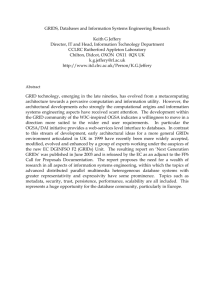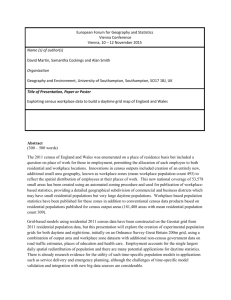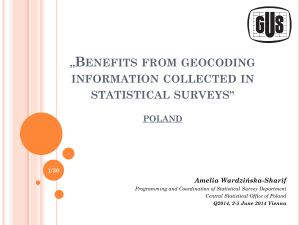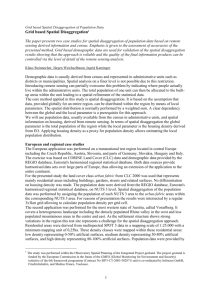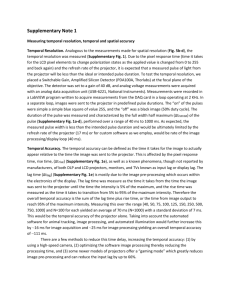Abstract
advertisement
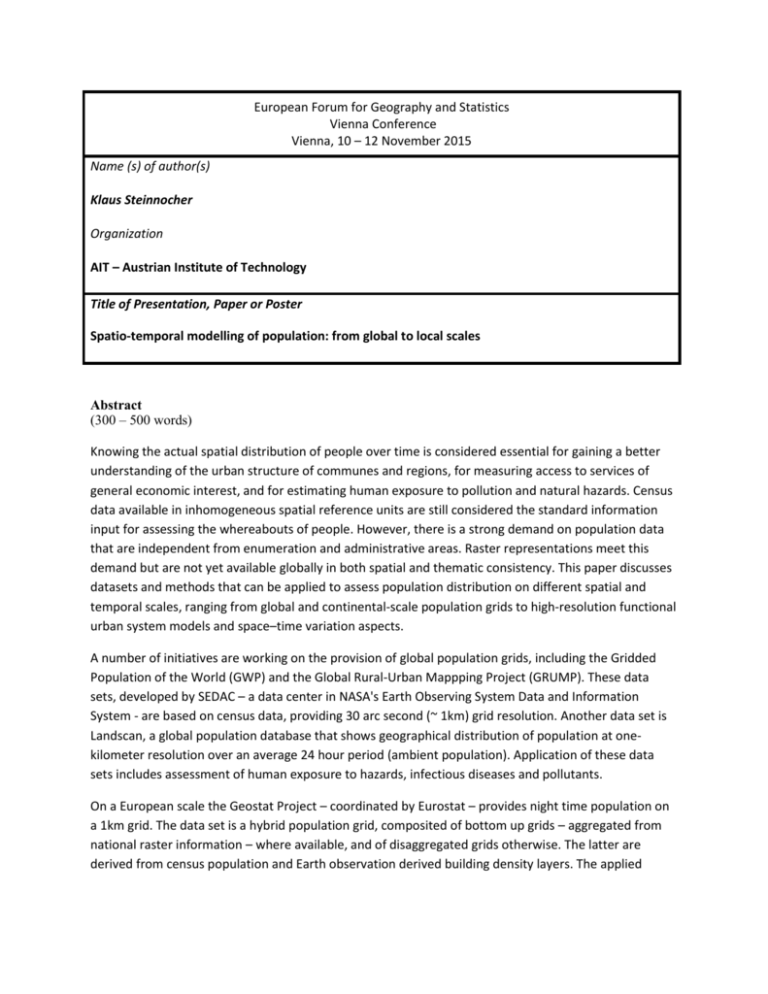
European Forum for Geography and Statistics Vienna Conference Vienna, 10 – 12 November 2015 Name (s) of author(s) Klaus Steinnocher Organization AIT – Austrian Institute of Technology Title of Presentation, Paper or Poster Spatio-temporal modelling of population: from global to local scales Abstract (300 – 500 words) Knowing the actual spatial distribution of people over time is considered essential for gaining a better understanding of the urban structure of communes and regions, for measuring access to services of general economic interest, and for estimating human exposure to pollution and natural hazards. Census data available in inhomogeneous spatial reference units are still considered the standard information input for assessing the whereabouts of people. However, there is a strong demand on population data that are independent from enumeration and administrative areas. Raster representations meet this demand but are not yet available globally in both spatial and thematic consistency. This paper discusses datasets and methods that can be applied to assess population distribution on different spatial and temporal scales, ranging from global and continental-scale population grids to high-resolution functional urban system models and space–time variation aspects. A number of initiatives are working on the provision of global population grids, including the Gridded Population of the World (GWP) and the Global Rural-Urban Mappping Project (GRUMP). These data sets, developed by SEDAC – a data center in NASA's Earth Observing System Data and Information System - are based on census data, providing 30 arc second (~ 1km) grid resolution. Another data set is Landscan, a global population database that shows geographical distribution of population at onekilometer resolution over an average 24 hour period (ambient population). Application of these data sets includes assessment of human exposure to hazards, infectious diseases and pollutants. On a European scale the Geostat Project – coordinated by Eurostat – provides night time population on a 1km grid. The data set is a hybrid population grid, composited of bottom up grids – aggregated from national raster information – where available, and of disaggregated grids otherwise. The latter are derived from census population and Earth observation derived building density layers. The applied disaggregation method is a weighted redistribution of population per census unit based on building densities. On a local scale the disaggregation approaches can be refined by using better and more detailed reference data for redistribution of population. These data are derived from very high resolution remote sensing imagery and local geo-spatial data sets, such as geocoded company data, allowing for a distribution of population on building level. However, the resulting population grids still refer to night time population. In order to refine the temporal scale of a population model, additional information is needed, such as work force and commuting data. Temporal disaggregation can provide average day-time versus night-time population distribution but also be refined to a pseudo dynamic representation e.g. on an hourly basis. Such approaches require detailed information on human activities during the course of a day that are derived from national time use statistics. For the spatial disaggregation these activities have to be linked with locations, thus requiring detailed information on land use. An alternative to these complex modelling approaches is the use of mobile phone tracking data, which represents a conceptually different approach based on big data analysis.


